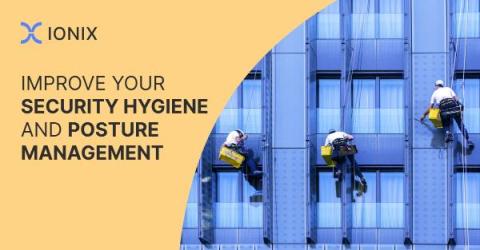Security | Threat Detection | Cyberattacks | DevSecOps | Compliance
Latest Posts
Navigating the Shift: From Vulnerability Management to Continuous Threat Exposure Management
In the rapidly evolving cybersecurity landscape, organizations face an ever-increasing barrage of threats. Traditional vulnerability management, while foundational, often falls short in proactively and continuously identifying and mitigating threats. This necessitates a paradigm shift towards Continuous Threat Exposure Management (CTEM), a more dynamic approach that aligns with the complexities of today’s digital environments.
How to Implement Multi-Factor Asset Attribution in Attack Surface Discovery
As organizations navigate through the complexities of the digital era, the challenge of accurately identifying and managing their asset inventory has become a critical aspect of their security posture. This task, known as attack surface discovery and asset attribution, involves a delicate balance: identifying all assets that belong to the organization while ensuring that no extraneous ones are included.
How to Improve Security Hygiene and Posture Management with ASM
Security hygiene and posture management (SHPM) is a relatively new concept, yet it’s fundamental to protecting sensitive systems and data. There’s growing recognition that it’s critical for today’s companies to fully understand assets and their relationships. As a result, more companies are looking to SHPM as a core component of their cybersecurity programs.
How are Attack Vectors Related to Your Attack Surface?
In the world of cybersecurity, two terms frequently dominate discussions among professionals: “Attack Surface” and “Attack Vectors”. At first glance, these concepts might appear separate, but they are intricately linked, shaping the way security experts strategize and implement defenses.
Gartner CTEM Starts with EASM
External Attack Surface Management(EASM) has emerged as a cybersecurity gold standard – a core component of modern cybersecurity programs. As digital organizations have grown more complex, getting the whole picture of the external attack surface – what’s connected to what and how this could pose danger – is a maze that only-world-class EASM solutions have been able to successfully navigate.
The State of Citrix Zero-Day Vulnerabilities 2023
Critical zero-day Citrix CVE-2023-3519 is still being exploited two months after Citrix released a patch. IONIX research found that 19% of the CVE-2023-3519 vulnerabilities are still unmitigated in comparison to only 3% among IONIX customers. In addition, IONIX customers were able to resolve this critical risk three times faster.
Cisco VPN Zero-Day exploited by ransomware gangs (CVE-2023-20269) - Insights and best practices for defense Copy
In the tech security scene, we’re always on the lookout for new vulnerabilities, especially when they are already exploited in the wild. The latest zero-day CVE-2023-20269 is hitting Cisco’s Adaptive Security Appliance VPN features. The attack surface scan conducted by IONIX research on a sample of organizations indicates that 13% of these appliances are potentially vulnerable through at least one interface.
Cisco VPN Zero-Day exploited by ransomware gangs (CVE-2023-20269) - Insights and best practices for defense
In the tech security scene, we’re always on the lookout for new vulnerabilities, especially when they are already exploited in the wild. The latest zero-day CVE-2023-20269 is hitting Cisco’s Adaptive Security Appliance VPN features. The attack surface scan conducted by IONIX research on a sample of organizations indicates that 13% of these appliances are potentially vulnerable through at least one interface.
Vulnerability Assessment Methodology: How to Perform a Vulnerability Assessment
There are flaws in every organization’s IT infrastructure, along with software that requires patching. These flaws could arise from various sources, such as human errors during software coding. Hackers are always on the lookout to exploit these flaws and applications. However, by following a vulnerability assessment methodology to perform vulnerability assessments, organizations can identify these weaknesses before the cyber adversaries do.











